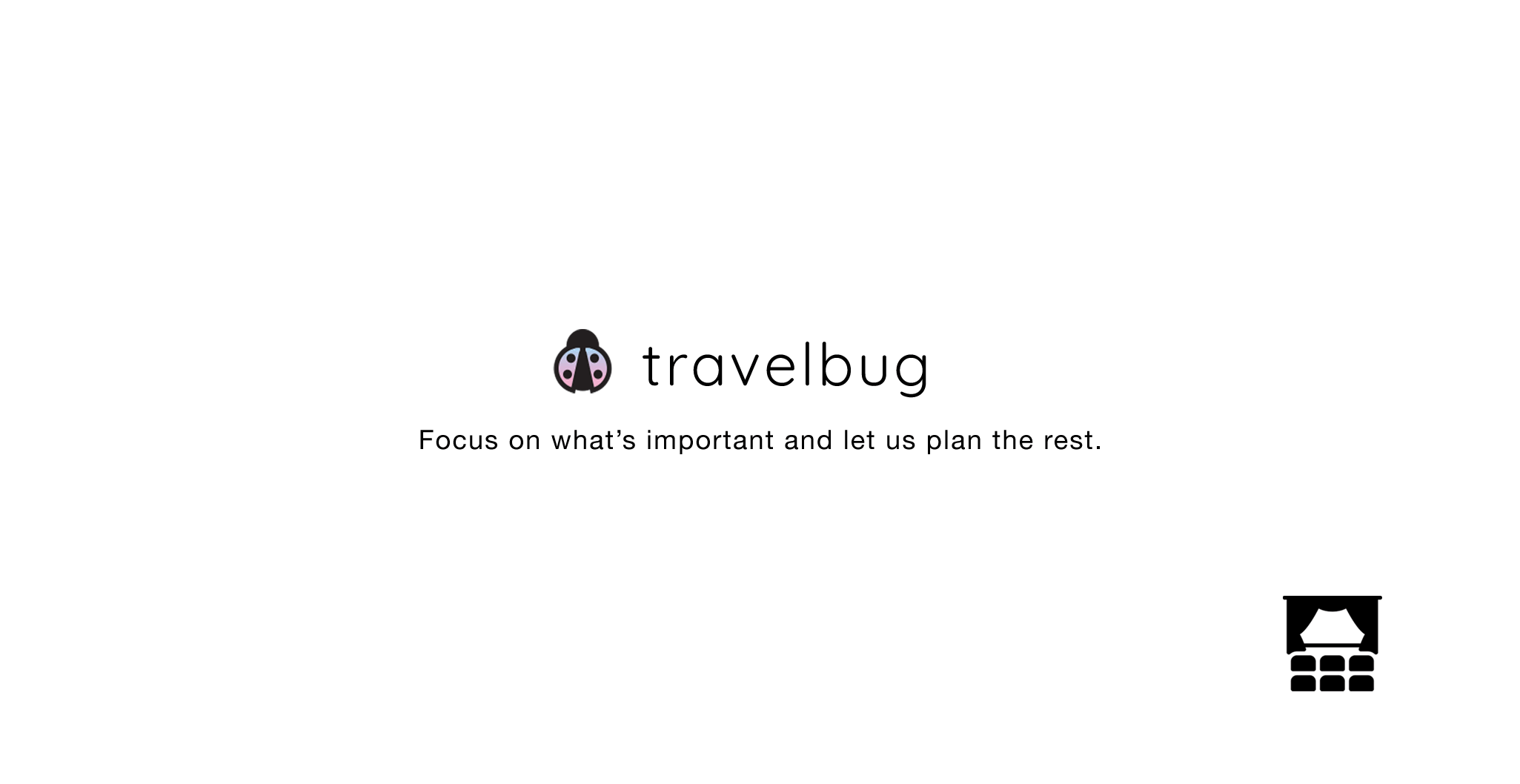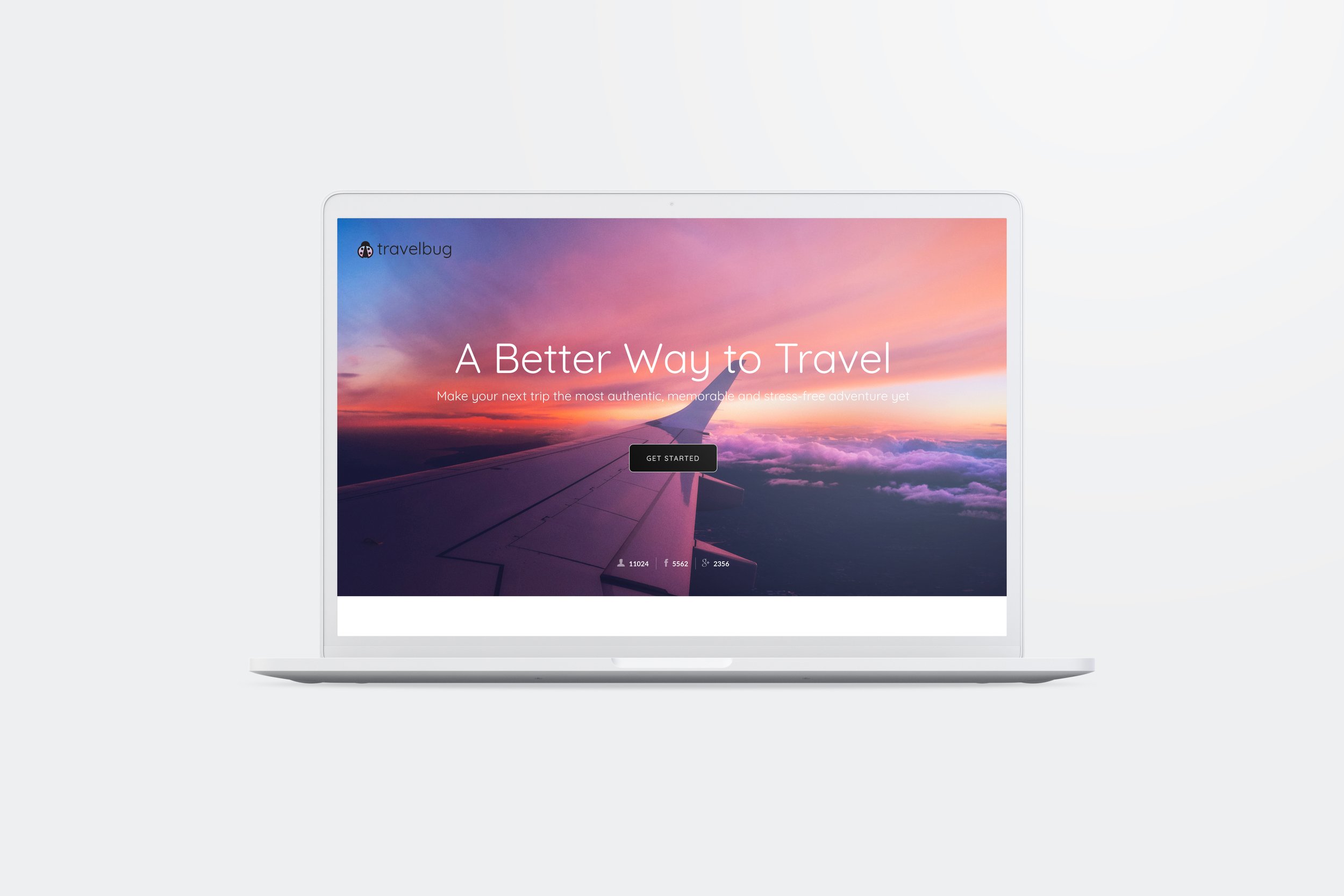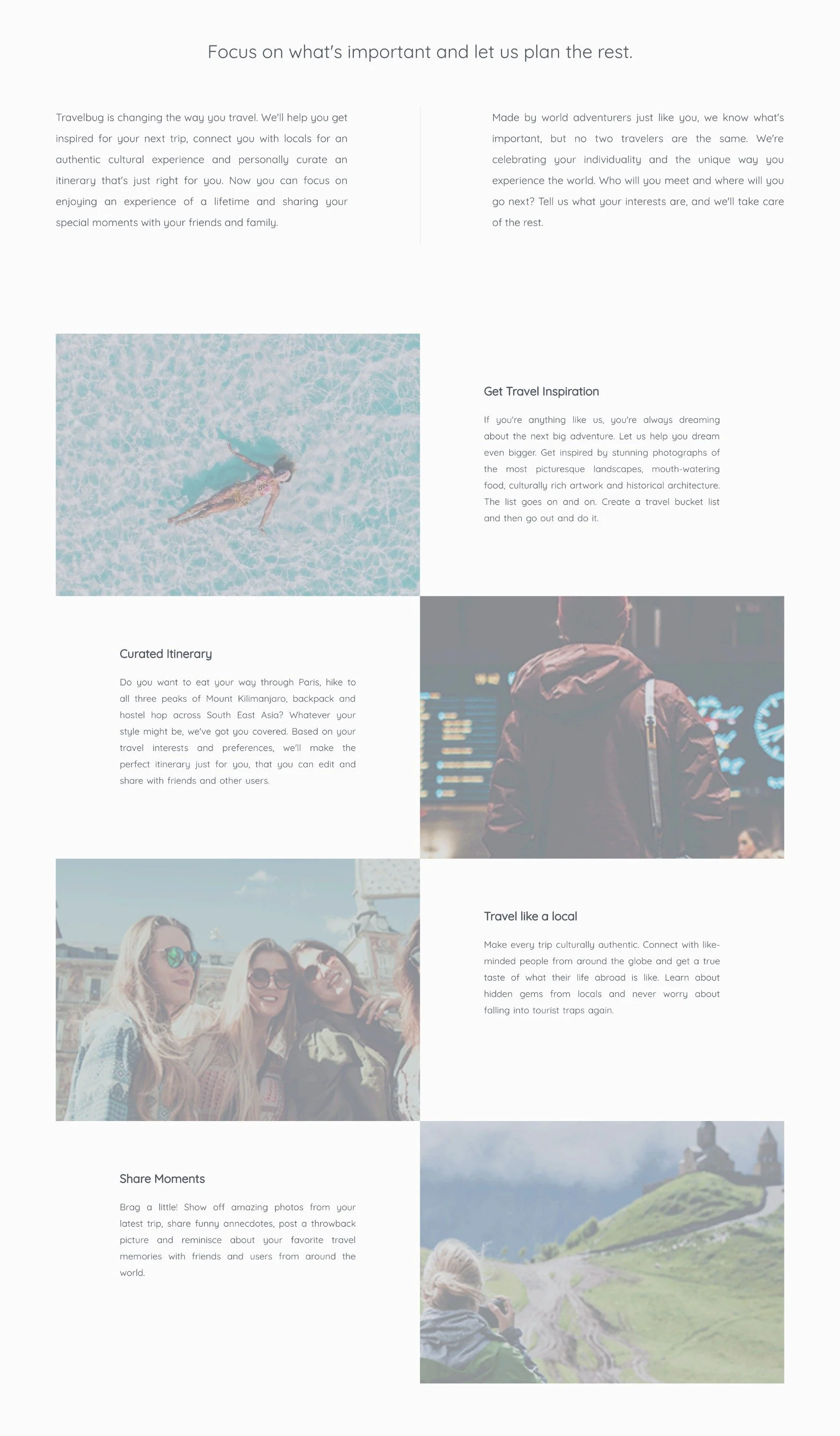Concierge Travel App Design
Travelbug is a travel-related mobile app project I worked with Ellie on for five weeks. For this project, Ellie and I researched the whole process of travel behavior. Our goal was to create a more efficient and personalized travel planning experience and get users the most out of their time to enjoy traveling.
The app provides a better way to travel. It will help you get inspired for your next trip, connect you with locals for an authentic cultural experience and personally curate an itinerary that is just right for you. Now you can focus on enjoying the experience of a lifetime and sharing your special moments with your friends and family.
Research
👉 App/mobile device used prior to travel
1️⃣ 80% of travelers use a smartphone app to research a trip. (Travelport Digital, 2018)
2️⃣ 85% of travelers use mobile devices to book travel activities. 1 in 3 travelers uses specific mobile applications, such as TripAdvisor and Yelp, to research accommodations and activities. (Opera Mediaworks, 2016)
3️⃣ Over 1 in 3 travelers across countries are interested in using digital assistants to research or book travel. (Google/Phocuswright, 2017)
👉 App/mobile device use during travel
1️⃣ 60% of travelers use navigation apps while traveling and 54% use mobile devices to look for restaurants while traveling. (Opera Mediaworks, 2016)
2️⃣ 34% of travelers use social media apps, 23% use travel apps, and 12% use transportation apps while traveling. (Opera Mediaworks, 2016)
3️⃣ Over 70% of U.S. travelers agree that they "always" use their smartphones when traveling, up from 41% in 2015. Travelers most frequently use their mobile devices to research activities or attractions, locate shopping areas and restaurants, or look up directions. (Google Consumer Insights, 2018)
👉 Personalization
1️⃣ Nearly 60% of consumers believe that their travel experience should deploy the use of AI (Artificial Intelligence) and base their search results on past behaviors and/or personal preferences. (PhocusWire, 2017)
2️⃣ If a travel brand tailored its information and overall trip experience based on personal preferences or past behavior, 36% would be likely to pay more for their services. (Google/Phocuswright, 2017)
👉 Last minute bookings
1️⃣ Travel-related searches for "tonight" and "today" have grown over 150% on mobile, over the past two years. (Google Data, 2017)
2️⃣ 72% of all mobile bookings made by U.S. travelers happened within a 48-hour window prior to the booking. (Sojern Global Travel Insights, 2018)
3️⃣ 38% of all bookings are made on the same day or two days before a trip, 53% are made within a week of a trip, and just 19% are made in advance. (PhocusWright, 2017)
👉 Travel experiences
1️⃣ 45% of travelers have a travel bucket list in mind. 82% of those will aim to tick one or more destinations off their list in the coming year. The most common feature on a bucket list is to see one of the wonders of the world – 47% will look to tick this off in 2018. 35% want to try a local delicacy, 34% want to head to an island paradise, and 34% want to visit a world-famous theme park. (Booking.com, 2018)
2️⃣ 3 in 4 millennials would rather buy an experience than a physical good. (Recode, 2018)
Persona
Based on the research, we see that people often use mobile devices to plan trips before traveling and to research attractions and activities while they travel. Also, people want to curate itineraries based on their preferences and past behaviors.
The target audience is defined as millennials who love to travel and gain experiences abroad. We created a persona based on previous research to facilitate our design decisions better.
Problems
We synthesized the research information and concluded with some key issues.
1️⃣ Planning a trip is very time-consuming.
2️⃣ Travelers need to use multiple apps to research, book activities, and look up directions prior to and during a trip.
3️⃣ Travelers need to spend lots of time researching a destination and travel activities if they want to create a personalized trip.
4️⃣ Travelers fear they will miss out on having a culturally authentic experience while traveling.
Solutions
1️⃣ Curate personalized itineraries that are tailored to a user's preferences and past behaviors through the use of Machine Learning. (Interests collected through the onboarding process, likes and dislikes collected through the 'Explore' feature, preferences set, and saved through the itinerary building.)
2️⃣ Make itinerary planning fast and easy so travelers can book last-minute trips.
3️⃣ Allow users to research destinations, book activity and look up directions all in one place.
4️⃣ Connect users from around the world to create authentic cultural experiences while traveling.
Onboarding
Here is the process of onboarding. After clicking the app icon, users can go to the welcome page. We can log in with Facebook or Google, which allows the users to connect via the app with their social media friends.
Before entering the home page, users can set their interests, which helps the app tailor itineraries to the users' preferences through the use of machine learning.
Then users can go to the home page; there are five nav bar items on the bottom of the screen, which are four features and profile settings. The feed shows the activity from our friends by default. The feed can also be filtered by city, distance, traveler or local, and interests.
For the People feature, users can search based on location, user status, and interests. Our app provides an opportunity to connect with users from around the world, and to travel like a local. Since users can meet up with each other in real life, there is an emergency button on the top of any screen in the app for any security issue.
Users can identify their status as a "traveler" or "local" on the Profile page. It can be changed at any point in time. Users also can talk with others with in-app messaging.
In the Explore feature, users can swipe through app-generated photographs of different destinations, which they can like or skip. Machine learning uses its data to provide tailored content and create more personalized itineraries. In this project, itinerary creation is the primary feature. I will show the high-fidelity prototype of the task flow later in this blog.
We did a series of wireframes.
Prototype
After creating a concrete wireframe, we moved onto a high-fidelity design. Since the goal is to expose travelers to possible activities, visual elements are kept simple to highlight the curated itinerary. Bright blue and warm purple reflect the lifestyle that the young generation looks forward to.
Here are the key points of the Itinerary feature.
👉 Create personalized itineraries in a matter of moments.
👉 Itineraries are personally tailored to users' likes and past behaviors as well as set preferences (including the number of daily activities, daily spending limits, daily start and end times) which can be saved to profile for later use.
👉 Can be edited and shared with other users.
👉 Includes nearby restaurant and transportation suggestions as well as directions.
👉 Includes online ticket purchasing information to allow users to book activities prior to travel.
Itinerary Task Flow Prototype
Landing page
Let's go to the landing page. A picture of a pink-purple sky takes almost the full page, which matches the color palette of the mobile app. Three numbers showing on the bottom tell us that how many users are using our app.
Then we scroll down, where a brief animated introduction shows up. Following that are our four key features, which are explained by contents, texts, and images.
👁🗨 A short video we created is included on the landing page. Click me to watch.
The next part is the testimonials. Users can check out the reviews of different features in-app.
Users can download our app by the top front page button and the bottom download button.













